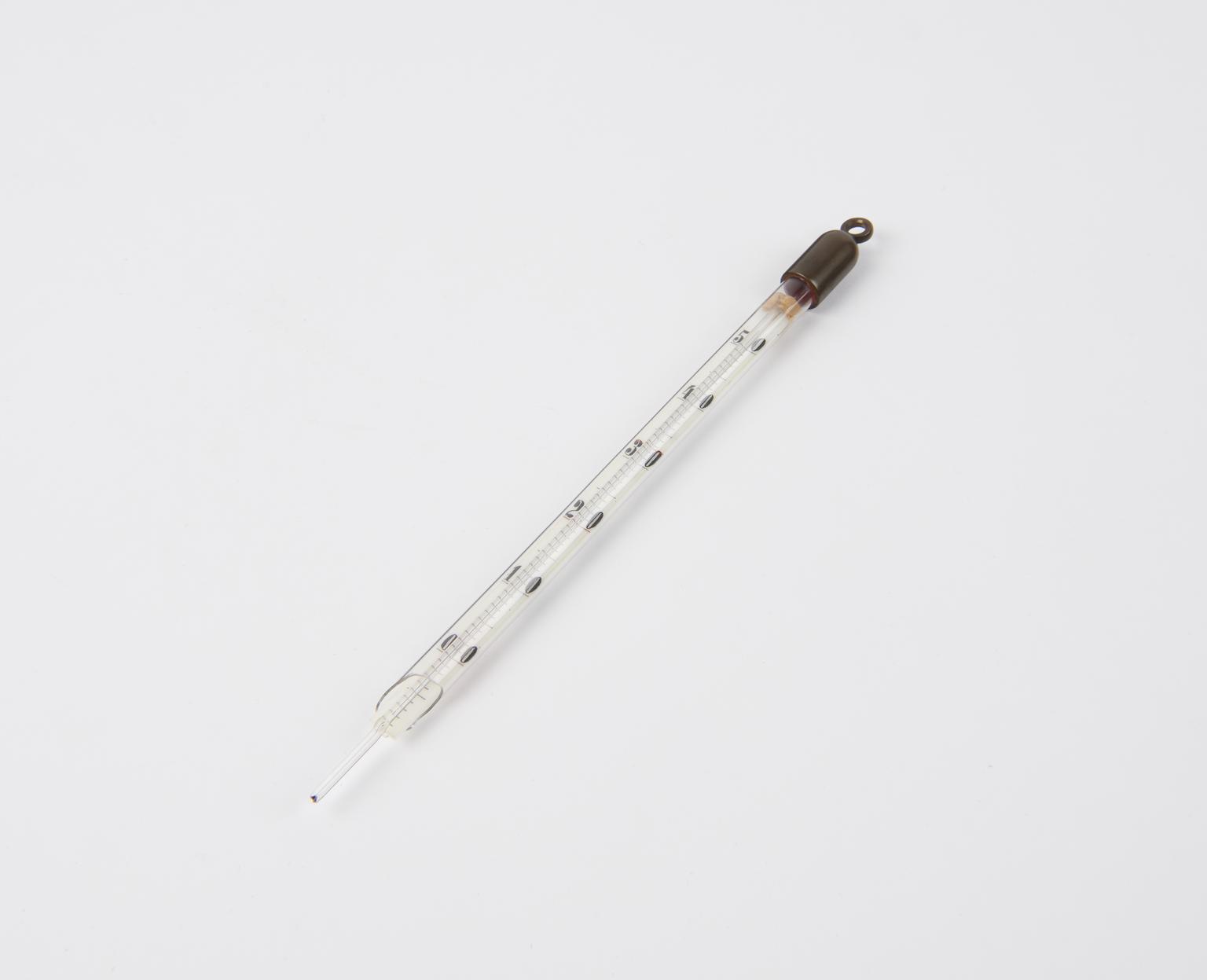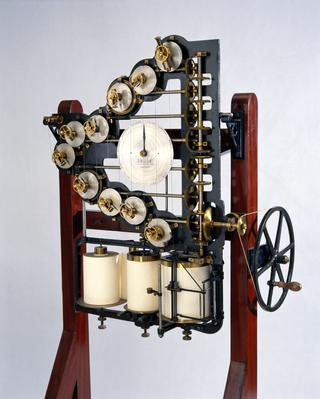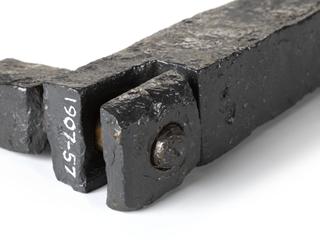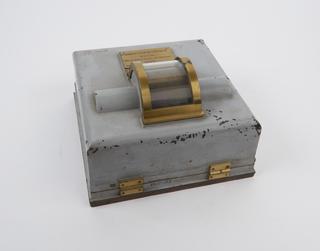Box for Eötvös torsion balance
Box for Eötvös torsion balance by Süss Nandor, Budapest, Hungary, c.1920.
More
Geophysical prospecting methods apply principles of physics in order to locate underground mineral or oil deposits. Portable gravitational instruments, either measuring absolute gravity or gravity differences can be used to detect irregularities below the surface of the earth, which can indicate geological structures and mineral deposits – when the density of the mineral differs considerably form the surrounding rock.
The balance consists of a beam suspended by a fine torsion wire, carrying at its extremities two weights at different vertical heights and enclosed in a metal case which can be rotated about a vertical axis. The position of the brass box enclosing the balance arm is indicated by a horizontal circular scale, and the orientation of the arm relative to it is observed by the aid of a mirror fixed on the balance arm, and a telescope.
A double-walled brass case protects the balance from radiation, electrical influences and eddy currents due to variation of temperature – necessary for obtaining the required sensitivity.






